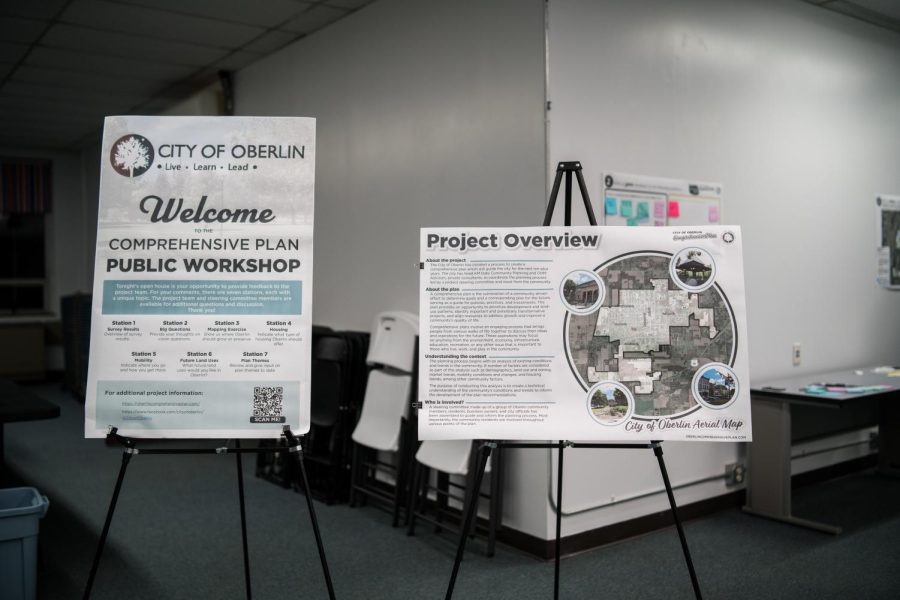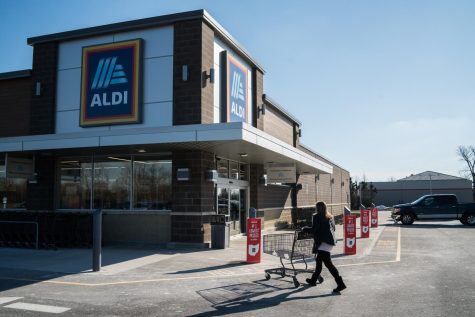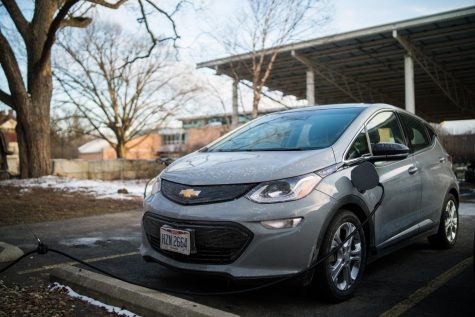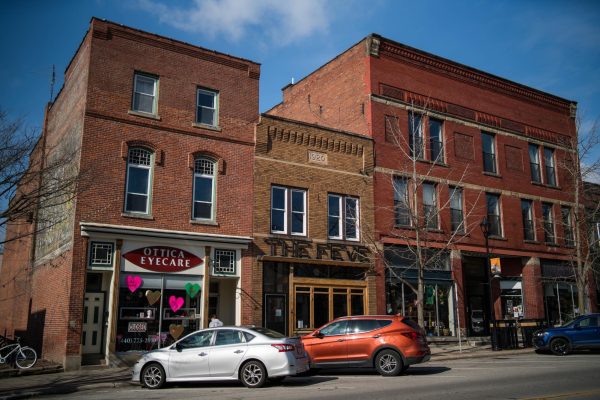Community Discusses City Policies, Future Comprehensive Development Plans
The event was hosted by OHM Advisors and KM Date Community Planning.
A public meeting was held Thursday, Feb. 16 in the Prospect Building for Oberlin community members to provide feedback on key issues affecting the town. This was in continuation of the survey conducted by KM Date Community Planning, OHM Advisors, and Downtown Strategies, Inc. for the Oberlin Comprehensive Plan. The comprehensive plan will serve as a guide for Oberlin City Council’s policy decisions for the next five to ten years.
The current comprehensive plan was created in 2005 with help from Northstar Planning and Design and was reviewed and updated by City Council in 2011.
“A lot has changed economically since 2005,” Director of Planning and Development Carrie Porter said. “We’ve been through a major recession, a pandemic, that has changed a lot of the ways people develop and use property.”
The 2005 plan, which was the most recent comprehensive plan until now, defined its approach toward Oberlin development in contrast to a number of plans created for Oberlin in earlier years. The first plan outlined was 1970’s Plan for Oberlin, which projected that Oberlin would have a population of 13,299 by 1985. The plan focused on outward growth, proposing suburban-style zoning and a number of commercial spaces on the edge of town. To this day, Oberlin’s population has not surpassed 9,000 residents.
In opposition to the suburban sprawl mentality of the 1970 plan, the 2005 plan recommended “infill” as a guideline, which was proposed to encourage both the development of existing lots within highly populated areas of Oberlin and the construction of new developments inside City limits.
“The intent of both types of infill is to make full, efficient use of the infrastructure in which the community has already invested (streets, sidewalks, utilities),” the 2005 plan reads. “Intensification of the core areas also means that more people will be within walking distance of local commercial areas, schools, parks, and other community amenities.”
The 2005 plan called for Oberlin to focus on developing density, but also acknowledged pressures from New Russia Township and Pittsfield Township to develop the “southern corridor,” a strip of land situated along State Route 58 from Hamilton Street to U.S. Route 20, which sat partially within City limits and partially in New Russia Township. It was projected in 2005 that the intersection between Route 58 and U.S. Route 20 would attract large-scale retail that would be positioned to serve Oberlin and the regional area south of Oberlin. The corridor currently houses Walmart and the forthcoming Oberlin Crossing Shopping Center, where an Aldi recently opened.
For the upcoming comprehensive plan, KM Date Community Planning, OHM Advisors, and Downtown Strategies, Inc. conducted a survey to identify the core issues facing the Oberlin community. They found that Oberlinians were concerned about affordable housing, job opportunities, public transportation, and the relationship between the City and the College. The 555 respondents represented a broad range of people invested in Oberlin, but in comparison to the overall Oberlin population, the respondent pool was on average older and disproportionately white.
“There was an extra attempt made here to reach out to the people of color, the communities, and that did help,” Principal of KM Date Community Planning Kirby Date said. “We kept the survey open longer in order to accomplish a little better balance, and we did improve the balance.” The results of the survey were presented at the open house, and the 33 attendees were encouraged to add comments to the responses. 53 percent of the survey respondents expressed that single-family homes for sale would benefit their future housing needs, while attendees at the open house emphasized interest in multi-family housing.
“Homeowner vacancy in Oberlin is 0.3 percent, when 5–10 percent is normal,” Date said. “Rental vacancy rate is 8.8 percent. So when people say, ‘There are no houses here for me to buy,’ they really mean it.”
Developing unused land is one option being considered to expand access to affordable housing.
“The City has quite a few vacant lots that it owns that could be developed with housing,” Porter said. “We’re working with a developer on a proposal to build eight single-family homes that would be affordable. [It] would ensure affordability for at least 15 years.”
The location selected for use is an essential consideration in future developments.
“If you were to look on a map, there’s a lot of potential — all the former farmland, just open areas all around,” Project Manager at OHM Advisors Arthur Schmidt IV said. “The development of infill housing, where appropriate, makes sense in Oberlin … Looking inward needs to happen, and then outward needs to be very carefully thought through as well … If you’re going to develop on the far end of town, how are individuals going to access the downtown, the College, the retail, the shopping, everything that goes along with it? Folks had mentioned to us about parking being an issue downtown. If you start to develop more housing on the outskirts and there’s no good, safe connections back into downtown, then you’re kind of doubling up on your potential issue with respect to parking. So everything kind of needs to be looked at in terms of, how does it affect one another?”
Transportation was another core issue identified in Oberlin. In 2020, Oberlin received the Paradox Prize from the Fund for Our Economic Future, an organization which funds projects that advance the development of Northeast Ohio, and used these funds to establish the Oberlin Connector Transit Service.
“The City and several nonprofit organizations in town had pooled their money together back in 2010, when the county cut almost all public transportation service for the county, so people here locally pooled their money together to provide that transportation service for two days a week from 9 a.m. to 6 p.m.,” Porter said. “So we applied to the Paradox Prize to expand transportation to five days a week from 6 a.m. to 6 p.m., and then 9:30 p.m. to 12:30 a.m., so we could hopefully hit some second- and third-shift people as well.”
The Oberlin Connector had been used 3,408 times from its creation to October 2021.
“In 2022, we did 4,800-and-some trips,” Porter said. “We’re probably reaching max capacity during our busiest hours now because it’s pretty much one vehicle dedicated to Oberlin.”
While the Oberlin Connector is an available public transportation option, the attendees of the event said that they did not travel via public transportation and expressed interest in future development in the sphere of transportation. The results of the survey and open house will be presented to the Comprehensive Plan Steering Committee at the next public meeting in March.






